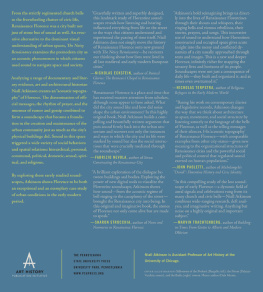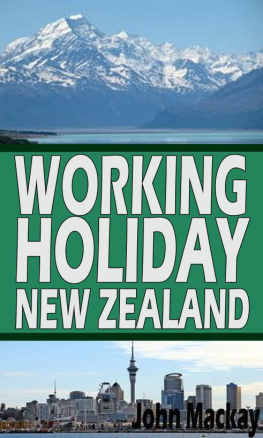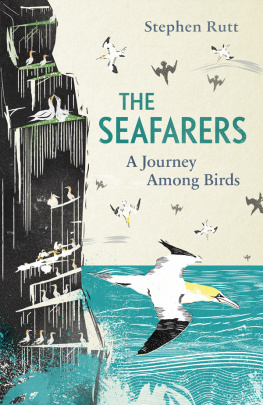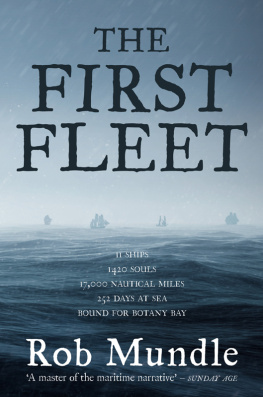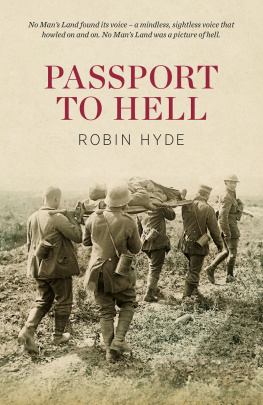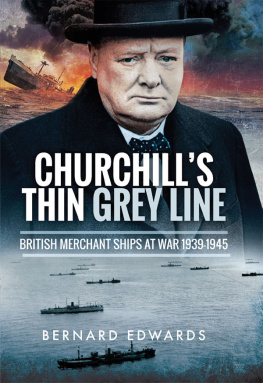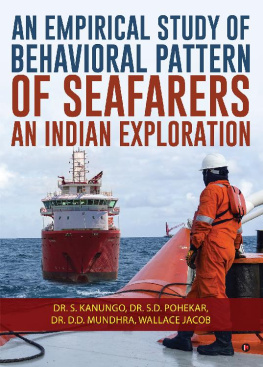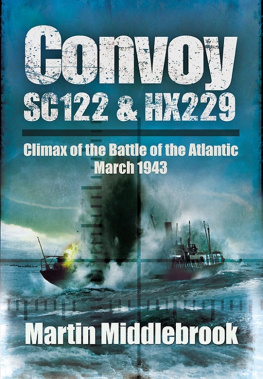from the 2005 edition
This book presents the personal stories of 15 New Zealand seafarers who sailed on merchant ships during the Second World War. Unlike most histories of war, which focus on those serving in uniform in the armed forces, the men whose stories appear here, and the thousands like them who served in the wartime Merchant Navy, were essentially civilian workers. As we shall see, however, civilian status was no guarantee of safe passage during wartime, when the worlds merchant fleets and their crews found themselves thrust into the front lines of the war at sea.
Those who appear in this book served in a variety of roles at sea: as able seamen and firemen, mates and engineers, apprentices and deck boys, stewards, even a baker. They sailed on ships of all shapes and sizes, from grand ocean liners through modern refrigerated cargo ships and oil tankers to the humblest tramp steamers and coasters. We see the Second World War as a truly global conflict, ranging from the Arctic Circle to the Red Sea, from the Caribbean to the Caroline Islands, from Cook Strait to the River Plate. Most of those interviewed were born or raised in New Zealand. Reflecting the powerful British influence on the New Zealand shipping industry, both during and after the war, two British seamen are included. Both settled here soon after the war: one, like many hundreds of his countrymen, jumped ship in a New Zealand port; the other spent many years as an officer and master in the coastal trade.
The introduction is intended to provide readers with a sense of the wider context in which these individual experiences took place. It begins with a discussion of New Zealands close economic and maritime links with Britain, and the sea wars long reach into the South Pacific. This is followed by an overview of the central campaign at sea, the Battle of the Atlantic, and an assessment of New Zealands Merchant Navy casualties. The introduction concludes by drawing on the personal memories of the interviewees to explore some of the key themes in the experience of merchant seafarers in the Second World War. A glossary is included to assist readers who are unfamiliar with the many nautical and military terms used in the interviews.
As with the other oral history projects undertaken by the Ministry for Culture and Heritage, the recordings of the interviews and supporting material will be archived in the Oral History Centre at the Alexander Turnbull Library, Wellington, where they will be available to future researchers subject to any conditions placed on them by the interviewees. While I have attempted to preserve the informal language of the interviews so that readers might hear the way the interviewees spoke, the text has been edited for brevity and clarity.
Many people and institutions have assisted me during the course of this project. My greatest debt is to the Merchant Navy veterans who agreed to share their experiences with me, loaned me photographs and other memorabilia and, with their families, welcomed me into their homes. I am grateful to the Prime Minister, Right Honourable Helen Clark, for her continued support for the Ministrys series of oral histories and for contributing the foreword. Ray Grover, then a member of the History Groups Advisory Committee, was instrumental in getting the project under way and organised my first interview in Wanganui. Ian Dymock and Stan Kirkpatrick, of the Wellington and Otago Merchant Navy Associations respectively, were generous in their support and put me in touch with many of the veterans who appear in the following pages. As well as sharing his experiences and research material, and driving me around Dunedin, Stan recorded the interview with the late Steve Carey as part of his own valuable oral history project in 1993-94. I am grateful to the Carey family, the Otago Maritime Society and the Turnbull Librarys Oral History Centre for allowing me to include an edited version of this interview. I would also like to thank Earle Crutchley, Phillip OShea, Terry Hall, John Middleton, Howard Anderson, Murray Henderson, Alan Jenkins, Norm Lamont, Trevor Bell and Billy McGee for introducing me to veterans, talking about their own experiences or providing other information.
As always, I must thank the staffs of libraries and museums: the National Library and Alexander Turnbull Library, especially Turnbull Library Pictures, the Photographic Archive and the Oral History Centre; Archives New Zealand; Wendy Adlam at the Museum of Wellington City & Sea; the Royal New Zealand Navy Museum, Devonport, especially Paul Restall; the Kippenberger Military Archive and Research Library at the Army Museum, Waiouru; Auckland City Libraries (Central Library); the Australian War Memorial, Canberra; and the Imperial War Museum, London. Thanks also to Tracey Wogan and the team at HarperCollins, and to my colleagues at the Ministry for Culture and Heritage: Megan Hutching, who generously shared her oral history expertise and experience; Bronwyn Dalley, Gavin McLean and Ian McGibbon, who commented on the introduction; David Green, who copy-edited the manuscript; Gwen Calnon and Claire Taggart, who arranged travel and helped order photographs; Alison Parr, Jamie Mackay, Fran McGowan and Redmer Yska. Finally, I am grateful to my family and friends, especially Lauren Perry, for all their support and encouragement.
Neill Atkinson
January 2005
| 2NZEF | Second New Zealand Expeditionary Force |
| AB | able seaman, a deckhand able to perform all the duties of a seaman aboard ship |
| aft, after | at or towards the stern |
| Aldis lamp | electric lamp with shutters for sending signals at sea |
| apprentice | indentured trainee officer |
| Armed Guard | navy gun crew on United States merchant ships |
| articles | ships papers detailing the crews conditions of employment |
| Asdic | sonar, underwater sound-ranging apparatus used to locate submarines (originally from Allied Submarine Detection Investigation Committee) |
| AWOL | absent without leave |
| ballast | additional weight carried in a ship to provide stability, especially when a cargo vessel is sailing empty (or light-ship) |
| bilges | lowest internal part of a ships hull |
| bosun | boatswain, the leading hand or foreman of the deck crew |
| bow | foremost end of the ship, the opposite of stern |
| boy | lowest rank in a ships crew (often deck boy, galley boy, bridge boy, etc.) |
| bridge | elevated platform above upper deck from which master and officers direct operations |
| bulkhead | vertical partition dividing a ships hull into compartments |
| bunkering | replenishing the bunkers |
| bunkers | internal compartments holding the ships fuel supply of coal or oil |
| cable | measure of distance at sea equivalent to 200 yards (183 metres) |
| captains tiger | masters personal steward |
| chippie | carpenter |
| cleaner | low-ranking engine-room hand whose job involved cleaning the boilers |
| clinker | stony residue or slag from burnt coal |
| coaming | raised lip around a hatch |
| degaussing | system devised to protect steel ships against magnetic mines, in which an electrical current is passed through a wire around the hull to neutralise the vessels magnetic field |

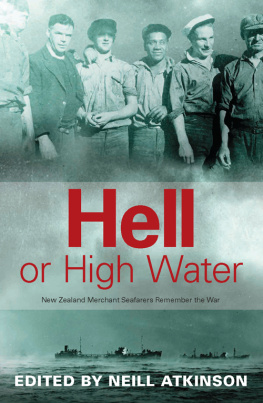
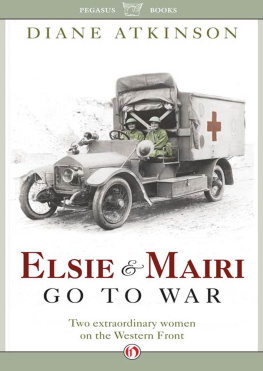

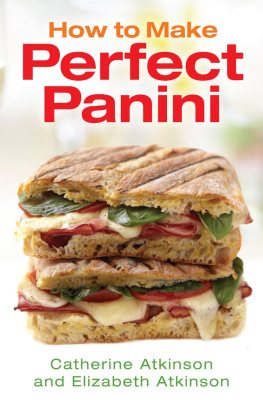
![Atkinson - An army at dawn: [the war in North Africa, 1942-1943]](/uploads/posts/book/178818/thumbs/atkinson-an-army-at-dawn-the-war-in-north.jpg)

